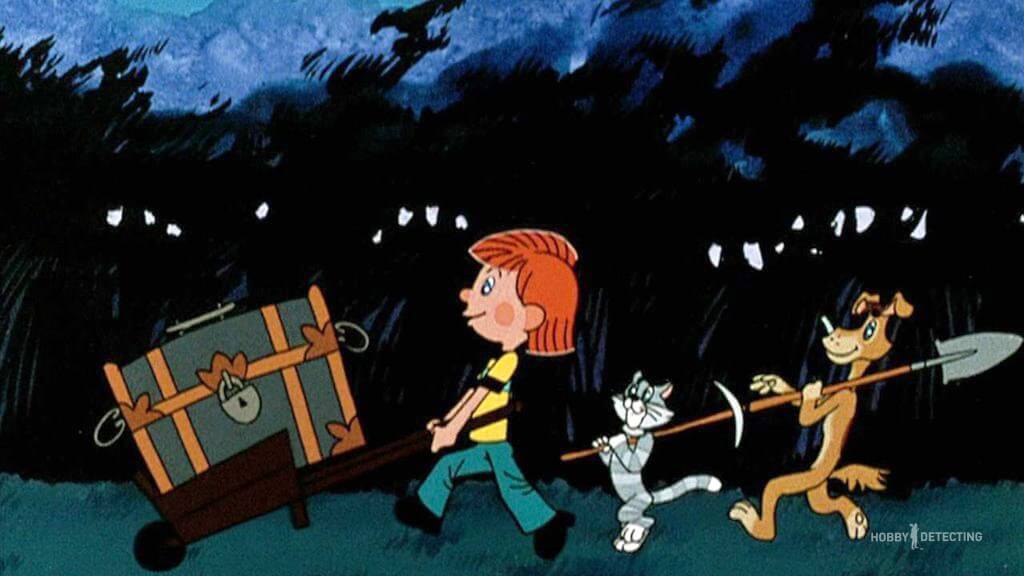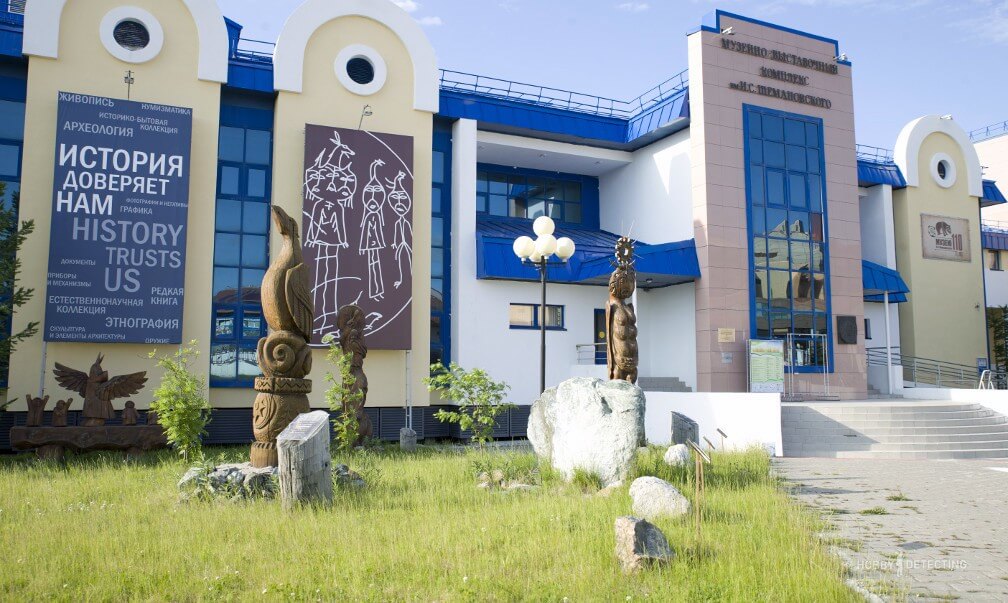If you find TREASURE, what to do? According to the law, according to conscience, according to the situation…
Good mood to you, dear readers of our blog.
I am convinced that almost every one of you dreams, wishes or makes every effort to find a cherished and preferably valuable treasure. However, as extensive judicial practice shows, in our country the population has no idea what to do if suddenly, suddenly or intentionally a treasure is found.
What you need to know immediately and on the topic??? Depending on how the values you find are determined, the final result of your successful find depends. What is it and how to understand it??? Everything is simple here. According to our confusing legislation, the valuables you find can be defined as: find, treasure, or archaeological objects. It is on these definitions that it will depend whether you can ultimately receive valuables as property, maybe even money as a reward, or it will be a fine with a criminal article as an edification.

Let’s look at everything in order and point by point.
Nakhodka. If you find something valuable and decide that it belongs to you, then you must understand that the law does not think so. A valuable item you find will legally be yours only if it (the item or items) does not have a legal owner within 6 months.
Example. In 2019, in Adygea, FSB officers stopped a transaction for the sale of a silver plate. The seller and buyer apparently agreed to purchase on one of the “closed” forums. The purchase amount was 15 thousand dollars. They were detained during the transaction. As Vasily K., the seller of the plate, said during interrogation, he found this valuable item. The detainee did not explain where and how exactly he found her.

And here, Vasily K found out for himself that, according to the law on ownerless things, after discovering the plate as a find, he was obliged to take it to the police station and declare that he had found this item. Since he did not do this, his actions fall under the criminal article of theft. Vasily K, after this turn of events, began to get confused in his testimony and say that this cup was given to him by an unidentified citizen free of charge.
As a result, the investigation concluded that the seized silver plate was (presumably) an archaeological object, Vasily K was convicted under administrative article 7.15.1 of the Code of Administrative Offenses of the Russian Federation “Illegal trafficking in archaeological objects.” As a result, a fine of 2,000 rubles and confiscation of the find in favor of the state.
Treasury. If you find (or have already found) valuable items and want to legally become the full owner, then the surest move would be to recognize this wealth as a treasure. Why? Because the sale of items on the black market is caused not only by the risks of being detained, but also by the fact that a rare and unique item will be bought from you at a price several times lower than its real value.
For example, the same Gokhran of the Russian Federation, when calculating the value of coins, uses the method of determining the average selling price at world auctions over the past five years. And the cost of items made of precious metals is determined by the formula , where the basis is the cost of the metal multiplied by the antiquity coefficient and the cultural value coefficient . So, the same silver plate from the above example could be valued at 50 thousand dollars. Minus 50% for the state, that’s 25 thousand dollars of net income for the treasure finder.
Note. The calculation of 50 thousand dollars per plate was not carried out by me, information about this was taken from an expert’s comment in a news article on the topic.
Ex.In 2013, a resident of the Yamalo-Nenets Autonomous Okrug brought the “Yamalo-Nenets District Museum and Exhibition Complex named after I.S.” to the State Budgetary Institution of the Yamal-Nenets Autonomous Okrug. Shemanovsky” Bronze Age treasure. A copper cauldron and more than 30 other items that were in the cauldron. Bracelets, dishes and jewelry. A typical treasure. The citizen wanted to donate all the items free of charge, but at the insistence of a museum employee, he wrote an application for payment of the due remuneration. Subsequently, the citizen himself who handed over the treasure and the museum employee who took the initiative regretted this statement many times over. Because we fell into the cycle of bureaucratic hell.

Yamalo-Nenets District Museum and Exhibition Complex named after I.S. Shemanovsky”
Two days after the treasure was handed over to the museum, the Salekhard prosecutor’s office, at the request of the Department of Culture of the joint-stock company, opened an administrative case on the fact of illegal archaeological activity. According to officials, the treasure handed over by a citizen could only be discovered as a result of archaeological work. And since he was not given an open sheet, it means his actions are illegal.
The staff of the Shemanovsky Museum had to conduct three examinations, two scientific research works, archaeological reconnaissance and provide the investigation with three conclusions that there were no traces of an archaeological object at the site where the treasure was found. Therefore, excavation work to extract the treasure cannot be recognized as archaeological work.
As a result, the case was closed, the treasure was accepted into the museum as local history material, and the citizen was not paid anything. As it turned out, in our country there is no legally approved method for assessing historical objects consisting of base metals.
Note.According to the law, there is practically no difference between a find (an ownerless object) and a treasure. In both cases, these are valuable items whose owner could not be identified. The only difference between a treasure and a find is how the item became ownerless. Accidentally or intentionally. A find is an item lost by accident. A treasure is an object or objects hidden intentionally. The law does not explain how to establish these events.
Archaeological object. And it must be said right away that over the past 30 years not a single case of voluntary delivery of the treasure. Even the most sensational example of a resident of Kursk and the golden chervonets who disappeared in the police is a case of not entirely voluntary surrender of treasure.
There are three examples of voluntary surrender of treasures, as with the same treasure in the Shemanovsky Museum. In this option of donating a treasure to a museum, a citizen can count on a meager amount of payment, and only at the free will of the museum director.
All other historical or numismatic values that came to the attention of the media were items seized during operational activities by employees of the Ministry of Internal Affairs and the FSB. In this case, almost always (there are a couple of cases when objects were returned to their rightful owners) So, almost always, the valuables were recognized as archaeological objects and were confiscated in favor of the state with subsequent transfer to the museum.
Items were recognized as archaeological based on chaotic, confusing and unclear conclusions from staffhistorical or archaeological museums. The fact is that until recently, according to the standards of the USSR, which had already sunk into oblivion, museum employees had the right to recognize this or that object as archaeological. Recognize without any techniques solely on the basis of one’s own opinion, attitude or imagination. On January 1, 2021, new laws regarding the work of state museums came into force, which clearly define the rights and responsibilities of museum employees. In general, now museum employees do not have the right to act as experts and determine whether an object is archaeological or not.
Example. In 2018, a farmer from the Astrakhan region, Rustam Mudayev, found a bronze cauldron on his plot of land. A year later, at the insistence of a friend, he took the boiler and handed it over to the Astrakhan Museum-Reserve. Archaeologists from this museum were interested in the unexpected find and they asked permission to conduct excavations at the site where the boiler was discovered. The farmer agreed.
As a result, archaeologists excavated a Scythian necropolis where among 30 burials there were two “royal” graves with gold decorations in the funeral complex e. Farmer Mudaev contacted the museum with a request for payment of the monetary reward due to him. To which I received the answer that valuable items were obtained during field archaeological work, and therefore are the property of the state, regardless of the place of their discovery. At the same time, they cannot pay money for the copper cauldron they handed over, since, as we remember from the previous example, in the Russian Federation there is no method for assessing the value of historical objects made of base metals.

© Photo : Astrakhan Museum-Reserve Items found during archaeological work, as well as a pot donated to the museum by a farmer
Conclusion. I am not a lawyer and have no right to give advice on legal topics. I will only say that if I succeed or am lucky enough to find the treasure, I will take it to Moscow and personally hand it over to Gokhran. Only in this case will I have at least the slightest chance by law to receive either the entire treasure or monetary compensation in the amount of 50% of its REAL value.
